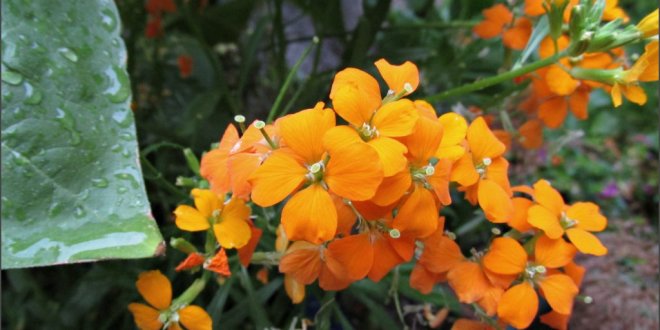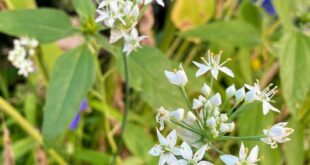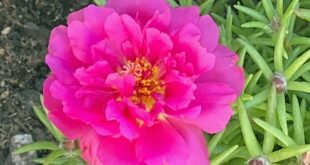From fast-growing clumps of strap-shaped foliage sprouted in early March, an abundance of bud clusters appear in April, which quickly pop open in an endless succession of very fragrant, absolutely neon-bright orange blooms well into mid-summer. Siberian Wallflower harmonizes beautifully with its fellow biennial Forget-Me-Not (Myosotis), the warm orange and cool sky blue.
Despite the common name, Siberian Wallflower originated in England. It was a deliberate cross made by John Marshall in 1846 between Erysimum perofskianum, originally native to the Middle East, in specific Persia, and E. decumbens, from northern Spain, the Pyrenees and the southwestern Alps.
The plants get a bit weedy looking as summer advances, but it is best to ignore this and leave at least a few plants to mature their seeds, because this pretty flower is quite happy to establish itself as a self-sowing permanent resident in the garden. It naturalizes quite nicely.
Despite the self-sowing trait, it is considered non-invasive; seedlings are shallow rooted and very easy to eliminate, but are generally welcome wherever they appear, or you can clip the plants back after blooming.
Full sun is preferred, and any sort of soil. Thrives with average fertility and watering care and is quite drought tolerant once established.
Details:
- Family: Brassicaceae (brass-ih-KAY-see-ee) (Info)
- Genus: Erysimum (er-RIS-ih-mum) (Info)
- Species: cheiri (kye-EE-ee) (Info)
- Synonym:Cheiranthus cheiri
- Category: Biennials, Perennials
- Height: 18-24 in. (45-60 cm)
- Spacing: 15-18 in. (38-45 cm)
- Hardiness: USDA Zones 5a through 9b (Sunnyvale)
- Sun Exposure: Full Sun to Partial Shade
- Danger: All parts of plant are poisonous if ingested
- Bloom Color: Red, Scarlet, Orange, Yellow
- Bloom Time: Mid Spring/Early Summer
- Foliage: Evergreen, Herbaceous
- Average Water Needs; Water regularly; do not overwater
- This plant is attractive to bees, butterflies and/or birds
- Flowers are fragrant
- Soil pH requirements: 6.6 (neutral) through 8.5 (alkaline)
- Patent Information: Non-patented
Propagation Methods:
- From seed; direct sow outdoors in fall
- From seed; winter sow in vented containers, coldframe or unheated greenhouse
- From seed; stratify if sowing indoors
- From seed; sow indoors before last frost
- From seed; direct sow after last frost
Seed Collecting:
- Allow pods to dry on plant; break open to collect seeds








